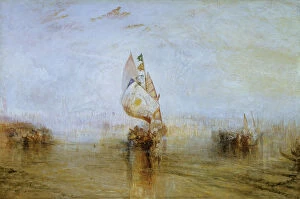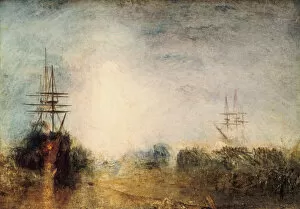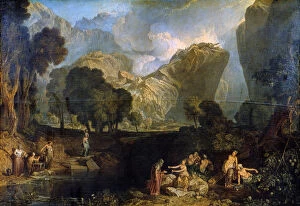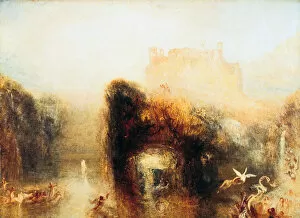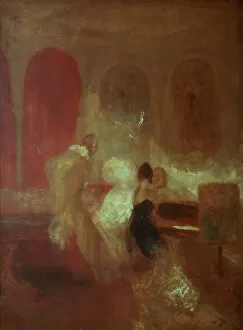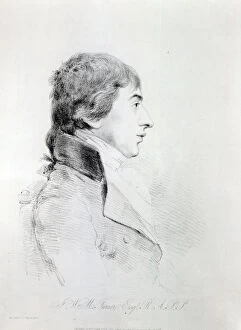Jmw Turner Collection (page 9)
JMW Turner, a renowned English artist of the 19th century, captivated audiences with his breathtaking landscapes and evocative seascapes
For sale as Licensed Images
Choose your image, Select your licence and Download the media
JMW Turner, a renowned English artist of the 19th century, captivated audiences with his breathtaking landscapes and evocative seascapes. His masterpieces continue to inspire awe and admiration even today. One of his most iconic works is "The Fighting Temeraire" from 1839. In this painting, Turner beautifully captures the fading glory of a warship being towed away by a steam-powered tugboat. The contrast between the majestic vessel and the modern machinery symbolizes the passing of an era. In "Whitby" painted in 1824, Turner showcases his mastery in capturing light and atmosphere. The scene depicts the picturesque coastal town bathed in golden hues as sunlight dances on the water's surface. Turner also left behind a self-portrait from 1799, revealing glimpses into his own persona. With intense eyes and disheveled hair, he presents himself as an enigmatic figure immersed in artistic contemplation. His fascination with historical subjects can be seen in "Ulysses Deriding Polyphemus" from 1829 (1904). This dramatic piece portrays Ulysses taunting Cyclops while sailing away from danger—a testament to Turner's ability to bring ancient myths to life through vivid brushstrokes. Not limited to grand scenes, Turner captured smaller moments too. In "Shoeburyness Fisherman Hailing a Whitstable Hoy, " he immortalized everyday life along England's coastlines during that time period—showcasing fishermen at work against a backdrop of turbulent waves. Throughout his career, Turner often returned to Brinkburn Priory in Northumberland for inspiration. He depicted its ruins multiple times over several decades—an exploration of decay juxtaposed against nature's enduring beauty. Another notable artwork is "Crossing the Brook" created around 1815. Here we see serene countryside scenery where figures traverse a brook amidst lush greenery, showcasing Turner's ability to convey tranquility and harmony.

